If you live in the city and you’re on a budget when it comes to a new set of wheels, there are plenty of options for you.
With a theoretical budget of about $20,000, we decided to get four compact city-friendly hatchbacks together to see which is the best option for you. We’ve got the three biggest sellers - the Mazda 2, Hyundai Accent and Toyota Yaris - and one well regarded challenger, in the form of the Volkswagen Polo.
Each of the models you see here represents the entry-point to their respective model ranges, so more specifically, we have the Mazda2 Neo, the Toyota Yaris Ascent and the Volkswagen Polo Trendline 70TSI.
The Hyundai Accent Sport is the only variant in that range, but unlike the VW and Toyota, there’s a sedan version of it (as is the case with the Mazda 2).
Let’s see how they stack up. And because these sorts of cars are often marketed directly at 20-something customers, you’ll notice a few comments from CarsGuide staffers Lily Murray, Jarryd Sullivan and Matthew Pritchard throughout - we’ve even got a verdict that includes their thoughts. You can let us know your own thoughts in the comments section below, too.
Design
The car that got the most glances out of this quartet was the Accent. That weirded us out, because it’s the equal-oldest car here - it came out in 2011 in this generation, the same time the current Yaris arrived on the scene in Australia.
We think it comes down to the lovely blue paint and the fact it’s the only one in this mix with alloys, rather than its exterior design per se. But it has aged well. The Yaris? Not quite as well. The proboscis bump-nose look got a few comments, though the rest of it was pretty inoffensive.

The Mazda2 is still a stylish little thing, even five years since launch. You need to know that this colour is no longer available - and you know what else should not be available anymore? Steel wheels with hubcaps on any car, no matter the price.
Imagine being the person who designed this, only to have these yucky looking wheels applied… Ew. And that goes for you, too, Toyota and VW.
The Polo isn’t daring in any way, but it’s the only one here with LED daytime running lights - even if they’re backdated by gross halogen headlamps (all of the others have halogen headlights, too - forget LED, projector headlights, HID or bi xenon at this price point!). The look is crisper and more contemporary than its competitors, though.
The base model versions of these cars are hardly the best candidates for a body kit, side skirts, a front spoiler or rear diffuser - but all of these models have a form of rear spoiler at the top of their tailgates.
City cars need to be compact in size, and there are millimetres separating these models. Here’s a table of dimensions:
| Hyundai Accent Sport | Mazda 2 Neo | Toyota Yaris Ascent | VW Polo Trendline | |
| Length (mm) | 4115 | 4060 | 3945 | 4053 |
| Width (mm) | 1700 | 1695 | 1695 | 1751 |
| Height (mm) | 1450 | 1495 | 1510 | 1446 |
| Wheelbase (mm) | 2570 | 2570 | 2510 | 2548 |
| Wheels | 16-inch alloys | 15-inch steel | 15-inch steel | 15-inch steel |
How does that translate to interior dimensions? Have a look at the interior photos and you might be able to tell.
| Model | Score |
| Hyundai Accent Sport | 7 |
| Mazda 2 Neo | 7 |
| Toyota Yaris Ascent | 6 |
| Volkswagen Polo Trendline | 8 |
Practicality
Each of these hatchbacks has five doors and five seats, but there are some marked differences in how usable the space in each is.
Look, you may not care too much about the boot space if you’re buying a city car - it might be a second car, or you mightn’t load much more in than your weekly shopping - but here’s how these four compared when we put in our levellers - the CarsGuide pram and our three-suitcase travel set.
Luggage capacity figures for these cars show a bit of a difference in terms of boot space. Here’s a rundown on the boot space dimensions for these models:
| Hyundai Accent Sport | Mazda 2 Neo | Toyota Yaris Ascent | VW Polo Trendline | |
Boot volume (VDA) five seats up | 370L | 250L | 288L | 351L |
Boot volume (VDA) two seats up | N/A | 852L | 768L | 1125L |
| Dual level boot floor? | No | No | Yes | Yes |
| Spare wheel type | Full size alloy | Space saver | Space saver | Full size steel |
The Mazda couldn’t fit all three cases - only the two biggest. The rest managed all three (the Toyota at a squeeze, the VW and Hyundai more comfortably).
The Yaris and Polo both have removable dual-level liner sections which essentially allow you to increase the amount of space. Each has a cargo cover to keep prying eyes away.
If you need more storage, you could consider a roof rack… or a bigger car, like a small SUV, which may even come with roof rails as standard, because none of these models do.
There’s more to storage space than just the size of the cargo hold, though - interior storage and space is important, too.
The Polo and Accent both have door pockets for bottles, but none have fold-down armrests with cupholders.
There is one cupholder for back-seat occupants in the Yaris, but it’s down low and could be hard to get to. As for map pockets, the Yaris has twin fabric ones, the Accent has one mesh one, the Mazda2 has one and the Polo has none!
Plus, the Polo misses out on grab handles, but it has huge door grabs that make up for it, while the Mazda2 has no rear lighting.
As for occupant space, we set the driver’s seat for my height (182cm) and all took the same spots in each of these cars - Lily up front, Pritchard and Jarryd in the back.
The Toyota was found to be “a nicer place in the back” than the Mazda, because it’s “ just more pleasant”. The seat is flat and spongy, and the knee room was found to be the best of this mix - unexpected, given it has the shortest wheelbase. It was “surprisingly roomy”.
The Mazda, by contrast, “feels confined” and “not comfortable at all” - the sort of car that would need “regular breaks on any road trip”. Knees were hard up against the seats in front, and the raked windowline was raised as a concern because it makes you feel “confined” and “a little claustrophobic”.
The Polo’s second-row space was better than the Mazda but described as “pretty squishy” for knee room, compounded by the largest transmission tunnel of this group - although the seat comfort and headroom were commended.
The Hyundai was found to offer a lower seating position, making for the best headroom and offering back seaters “a good, supportive seat”. The guys weren’t fans of the hard-wearing plastic sections on the backs of the front seats - depending on who is sitting where, you might end up rubbing your knees on them.
Up front there are cupholders down low in each of these cars, but none have a covered centre console or armrest, plus all four have decent door storage with bottle holders, the VW’s being the biggest of the bunch.
Speaking of which, the VW also has the biggest media screen - as standard, you get a huge 8.0-inch unit: here’s a breakdown of how that stacks up against the other cars here:
| Hyundai Accent Sport | Mazda 2 Neo | Toyota Yaris Ascent | VW Polo Trendline | |
| Touch screen | Yes | No | Yes | Yes |
| Screen size | 5.0-inch | None | 6.1-inch | 8.0-inch |
| Apple CarPlay | Yes | No | No | Yes |
| Android Auto | No | No | No | Yes |
| USB Count | 1 | 1 | 1 | 2 |
Bluetooth phone & audio streaming | Yes - some issues with Bluetooth connectivity | Yes - very hard to connect | Yes - easy to connect if you're not moving | Yes - easiest by far to connect |
None of the models have a satellite navigation system or GPS fitted, but the real talking point here is the lack of any form of screen for the Mazda. That’s right - the Neo model still comes with a dash top radio tuner style set-up, which our guest testers were disgusted by.
“That looks like it’s from 2002,” said one. “This is so much easier than CarPlay,” another remarked, drenched in sarcasm. “Should you need to feel like you’re programming a VCR when you change radio station?” Precisely. And the answer is no.
These are all viable criticisms from target market customers - Mazda really ought to be ashamed. But hey, if you want a screen, you can buy the Maxx model (and you’ll also get a lot more gear for that extra expense). We’ll get into the specifications and equipment levels below.
None of these models have beautiful materials used - all have lots of hard plastic that feels cheap to the touch, including the VW. But the VW does have a more modern style to the dashboard, and from a perceived quality standpoint, it was found to be the best by a long, long margin.
Its steering wheel is leather covered and lovely, too (unlike the fake leather on the Hyundai wheel, where the other two cars have hard plastic tillers).
Plus it’s the only one with a digital speedometer as part of its MFD driver display, which we all know could be the difference between being ‘fine’ or being ‘fined’. Sure, it’s compact inside, but it feels well thought out and expensive, and that’s what helps it score well in this section.
Our potential buyer judges said the simple layout of the Yaris was plain, but pleasant, while the Hyundai was criticised for having a few odd elements - not just the tiny screen, but some odd controls and plastics. Our judges couldn’t get over that screen in the Mazda, which “brings down the whole feel of the cabin”.
| Model | Score |
| Hyundai Accent Sport | 8 |
| Mazda 2 Neo | 5 |
| Toyota Yaris Ascent | 8 |
| Volkswagen Polo Trendline | 8 |
Value
There are some big differences when it comes to what you get for your money. All four of these little hatchbacks are petrol-powered and fitted with an automatic transmission as tested - you can get manual versions of each of these cars, if you so choose, but nine out of 10 buyers go for the auto, and so have we.
These four hatchbacks don’t align perfectly on price - the most affordable model here slips in below seventeen grand, where the most expensive is more than twenty one thousand dollars, before on-road costs.
But remember, these are the base models for each of these vehicles, and that just makes it all the more interesting if you ask me. And hey, there are higher-spec versions of each of these models if you want more for your money - you’ve just got to be willing to spend more to get it.
The most affordable model here is the Toyota Yaris Ascent, which has a list price of $16,920 plus on-road costs as an automatic. That’s before you include the optional 'Toyota Safety Sense' pack our car had fitted (+$690).
The next most affordable is the Mazda2 Neo auto, listing at $17,320 plus on-road costs.
The Hyundai Accent Sport auto hatch lists at $17,490 plus on-road costs, making it our second-most expensive model. But it’s a b-i-i-i-g gap to the model above it.
The VW Polo Trendline 70TSI auto is sold at $21,290 plus on-road costs. That makes it a huge chunk dearer than its rivals, but also more exxy than, say, a Kia Cerato or Hyundai i30 base model, meaning you could potentially pay less to get more car, if you want to.
Now, this price list doesn’t necessarily mean that’s how much you’ll pay in each instance. There are always drive-away price offers occurring, meaning these may be better considered as a guide price rather than what most people actually pay.
The VW has some items that its rivals can’t match - but does it justify that cost? Not according to our guest testers, who all said it was too expensive despite being impressive in many ways.
Here’s a model comparison on the range of standard features fitted:
| Hyundai Accent Sport | Mazda 2 Neo | Toyota Yaris Ascent | VW Polo Trendline | |
| Alloy wheels | Yes | No | No | No |
Tyre pressure monitoring | No | No | No | Yes |
| Front brakes | Disc | Disc | Disc | Disc |
| Rear brakes | Disc | Drum | Drum | Drum |
LED daytime running lights | No | No | No | Yes |
| Auto headlights | No | No | Yes | No |
| Auto wipers | No | No | No | No |
| Air conditioning | Yes | Yes | Yes | Yes |
| Push-botton start | No | Yes | No | No |
| Leather lined steering wheel | Yes (but poor quality) | No | No | Yes |
| Cruise Control | Yes | Yes | Yes | Yes |
| Sound system speakers | 4 | 4 | 6 | 6 |
| Power windows | Yes | Yes | Yes | Yes |
| Electric mirrors | Yes | Yes | Yes | Yes |
| Heated side mirrors | No | No | No | Yes |
While push button start is included on the Mazda, it’s not a keyless entry system - so you’ve still got to have the key in your hand to open the doors.
How many speakers mightn’t matter to you, but our testers found the two cars with the higher speaker count had the best sound quality.
None have a subwoofer, none have a CD changer or DAB radio or a DVD player as part of their multimedia infotainment packages, but all have regular AM/FM radio, and you get a CD player in all but the Accent. All can deal with MP3 files.
There’s no option for a sunroof here, nor is there a tech pack, sport pack or premium package, but if you spend more you might be able to option additional gadgets. In higher-grade models you can get leather seats, too - but it’s a cloth-only affair at this level.
.jpg)
If colours matter to you (or colors, if you’re reading this in the US), then you’ll be happy to know the selection is good across these models. All four have the option of black, blue, white, silver, red and grey, and you can get an orange Polo, a yellow Accent, or a Yaris in either of those hues. Strangely enough, there is no green option on any of these models, and none have the option of coloured rims, either.
But you can option different rims from the accessories catalogue if you prefer them to the less kerb-sensitive steelies fitted, and you should get floor mats thrown in at the point of sale. Haggle hard.
It’s quite hard to score this segment, because the VW has some nice additions over its competitors, but it is expensive. The Yaris looks pretty good value here, though.
| Model | Score |
| Hyundai Accent Sport | 7 |
| Mazda 2 Neo | 7 |
| Toyota Yaris Ascent | 8 |
| Volkswagen Polo Trendline | 7 |
Engine and transmission
You might care about engine specs, or you might not. A torque rating might be second language to you, or it could be absolute gibberish. Either way, here’s how these four models compare in terms of specifications.
All four of these models have a petrol motor, though there is some difference in terms of engine size and outputs. Only one has a turbo, all of them are front-wheel drive and, as tested, all have an automatic transmission, and one is a bit of a horsepower hero.
And even though we wouldn’t recommend fitting a tow bar, we’ve included the relevant details below.
| Hyundai Accent Sport | Mazda 2 Neo | Toyota Yaris Ascent | VW Polo Trendline | |
| Engine size (litre) | 1.6 | 1.5 | 1.3 | 1.0 |
| Engine cyclinders | 4 | 4 | 4 | 3 |
| Turbocharged? | No | No | No | Yes |
| Power output | 103kW at 6300rpm | 79kW at 6000rpm | 63kW at 6000rpm | 70kW at 5000-5500rpm |
| Torque output | 167Nm at 4850rpm | 139Nm at 4000rpm | 120Nm at 4600rpm | 175Nm at 2000-3500rpm |
| Transmission | Six-speed auto | Six-speed auto | Four-speed auto | Seven-speed dual-clutch auto |
| Weight (kg) | 1170 | 1045 | 1035 | 1147 |
Towing capcity - unbraked/braked (kg) | 450/900 | 500/900 | 550/900 | 590/1000 |
There are manual transmission options for all four of these cars - so if you prefer to take matters into your own hands, that could appeal to you. You can’t get 4x4 or AWD or rear-wheel drive for any of these models, either.
Forget petrol vs diesel, none of them have diesel as an option (which means the diesel particulate filter is one less thing to worry about…). There is no LPG, EV or plug in hybrid of any of theses either.
If you’re concerned about automatic transmission problems, clutch, suspension, gearbox, engine, injector, oil pump or turbo troubles, be sure to search “[make] [model] problems”.
| Model | Score |
| Hyundai Accent Sport | 7 |
| Mazda 2 Neo | 6 |
| Toyota Yaris Ascent | 5 |
| Volkswagen Polo Trendline | 7 |
Fuel consumption
All of these cars should have decent fuel economy - I mean, if you look at the figures, you’d think you would see excellent mileage and diesel like fuel consumption figures.
That wasn’t the case in the real world, though - and that could be a big issue for you. It meant for our guest testers that one of these cars was ruled out of contention, such was the guzzling nature of it.
And we asked our YouTube community how important it was, and 15 per cent of respondents ranked it as the most important element for a city car.
See below for the claimed usage vs the actual results - note, we’ve gone with the Aussie standard of L/100km for petrol consumption, rather than km/L.
| Hyundai Accent Sport | Mazda 2 Neo | Toyota Yaris Ascent | VW Polo Trendline | |
| Official combined consumption | 6.6L/100km | 5.5L/100km | 6.4L/100km | 5.0L/100km |
| Actual fuel use | 13.9L/100km | 10.3L/100km | 10.6L/100km | 10.1L/100km |
| Percentage over claim | 110% | 87% | 65% | 102% |
| Fuel tank capcity (litres) | 43 | 44 | 42 | 40 |
| Possible mileage based on actual fuel use (km per tank) | 310 | 427 | 396 | 396 |
| Petrol required | 91RON regular | 91RON regular | 91RON regular | 95RON premium |
None of these models have an eco mode, but the VW is the only one with engine start-stop that will cut the engine if you come to a halt in traffic.
And yes, it was the best for city fuel consumption, but it was well over its claim - just like all of these cars. But it’s also the only one that requires premium unleaded petrol (95RON minimum).
It has to be said that we aimed to just do city driving in these models for this test, because that’s what the vast majority of customers will do. You will see lower figures if you hit the highway, but we wanted to give you an idea of what you can expect in day-to-day urban duties first and foremost.
Suffice to say, none of these cars scored well in this section of the test - particularly the Hyundai.
| Model | Score |
| Hyundai Accent Sport | 4 |
| Mazda 2 Neo | 6 |
| Toyota Yaris Ascent | 5 |
| Volkswagen Polo Trendline | 5 |
Driving
These cars are made to be driven in cities primarily, and that’s exactly what our testing procedure focused on. Potholes, road joins, roundabouts, traffic lights, speed bumps, traffic - it was all part of the sequence.
In the cornering bits of city driving, the Mazda was the most fun. Its steering sets it apart from the other models, feeling a bit more involving and lively but also offering really nice weighting at pace.
Its turning circle is tight, too, with a turning radius of just 9.4m compared with 9.6m for the Yaris, 10.4m for the Accent and 10.6m for the Polo.
But while it corners nicely, the suspension is both very low (we scraped at the front more than any other car here - but there are no ground clearance figures offered by these brands) and also very firm and often thumpy, resulting in a punishing ride over broken surfaces. You might excuse it in a sportier model, but the performance of the 2 doesn’t justify the behaviour.
That’s because its engine is a real whinger of a thing. It’s almost reluctant to accelerate, with a wheezy nature to it “that doesn’t sound like a new car”, according to one of our guest testers.
The automatic transmission does a good job of making the most of the engine, and it’s best in sport mode, but even then, it wasn’t a lot of fun in stop-start traffic.
It was also the noisiest of these four by some margin for road noise, and also the hardest to see out of because of its raked window line and badly shaped mirrors (including a weirdly non-convex mirror on the driver’s side).
“The visibility from the driver’s seat is so bad - you really can’t take advantage of the size of the car because it’s comparatively so hard to see out of,” said one of our testers.
It was surprising how little all of our judges - myself included - enjoyed the Mazda. We expected a lot more.
One that surprised us all was the Hyundai.
The engine was what separated it from the rest. It offered the most peppy response without any hesitation, building pace with a fair bit of noise accompanying it, but doing so in a brisk manner.
We didn’t do 0-100 acceleration speed testing as part of this review, but it would have been the winner based on seat of the pants and its performance figures.
The transmission acted pretty smartly, too, though it is still eager to shift up to save fuel. Which it clearly failed at.
Even though it has four-wheel disc brakes, the pedal response was underwhelming.
The Accent’s suspension felt the most sporty and in tune with the road below - you feel a lot more of the little lumps and bumps in the road, and the wheels can sink into potholes with a thump.
The rear suspension rebounds a bit abruptly, though, and I personally found it too sharp for a car like this - but the three other judges on this test rated the drive experience highly.
I found the steering to be a bit dead on centre, but it was generally very easy to turn the wheel in roundabouts and during parking moves.
Driving in the Toyota it’s like you’ve got comfort mode selected.
The suspension is soft, to the point where it’ll wobble and wallow from side to side. That also means that it can be upset by successive rapid-fire bumps - but if you prefer a softer ride in the city, it might be ideal for you. It’s definitely set up for comfort rather than ultimate control.
The steering is light at lower speeds, which is great in tight streets and parking lots, but when you slow down from higher speed it can be a touch odd in its weighting.
The engine is hardly a hero, with modest outputs and relatively meagre punch on offer. It was inoffensive in lower speed urban driving - it’s just when you get up to higher speed on a highway that you start to notice it struggling.
The four-speed auto works decently around town, but it is let down by a lack of extra gears to play with. That said, I’d take a decently configured four-speed auto over a fidgety six-speeder any day.
The Polo was the best of the bunch for suspension control and comfort overall. You notice little lumps in the road, but the suspension does a really good job of isolating the cabin from the worst of the road surface.
The steering was also found to be the best balance of nice weighting and easy usability. It feels like a more mature offering than its competitors in terms of driving manners - like an adult amongst teenagers.
And you need to act like an adult when you’re driving it, because it takes a bit more thinking when you accelerate from a standstill.
The combination of a turbocharged engine, a dual-clutch transmission and stop-start conspire to make traffic clogs a bit more of a challenge. You can’t simply plant the right pedal - you’ve got to manage your throttle.
I can understand why that could be enough to turn off customers, and thoroughly recommend you ask for a lengthy test drive and try and find some traffic to see if you can deal with it.
But once you’re above 10km/h you’ll be rewarded with a thrusty engine, a nice three-cylinder thrum, and a transmission that is snappy and smart with its logic when you ask more of the engine.
Plus the brakes are typical VW - and by that I mean they’re bitey and trustworthy.
All four of our testers felt the VW was the most grown up of these cars. A sensible and smart offering - if you can afford it.
| Model | Score |
| Hyundai Accent Sport | 7 |
| Mazda 2 Neo | 6 |
| Toyota Yaris Ascent | 6 |
| Volkswagen Polo Trendline | 7 |
Safety
There is more to it than just the safety rating of each of these cars - because all five have the maximum five-star ANCAP score assigned to them.
But, here’s the kicker - the Hyundai Accent scored five stars way back in 2011 (meaning there’s no way it would score that rating under today’s much stricter criteria), while the Mazda2 was awarded the top mark in 2015, and the Yaris and Polo both got the high five in 2017.
There are some surprise omissions in terms of safety features here. I mean, you might consider a reversing camera to be a convenience feature when parking, but it could save someone’s life.
Likewise parking sensors - anything that can potentially stop you from impacting something or someone should be considered a plus.
That’s why it’s insane that the Accent doesn’t have any form of back-up aid at all. “It’s a city car, for f***’s sake!” said one of our testers. The anger was slightly less over the Mazda’s lack of a camera, which was less offensive because it at least had parking sensors.
The Hyundai has a screen that would make a great display for a camera, after all. None have active park assist, but you can get it if you spend a lot more on a higher-grade, optioned-up Polo.
Here’s a breakdown of what each of these models has in terms of safety gear and advanced safety technology.
| Hyundai Accent Sport | Mazda 2 Neo | Toyota Yaris Ascent | VW Polo Trendline | |
| Reverse camera | No | No | Yes | Yes |
| Parking sensors | No | Rear | No | No |
| Airbag count | 6 | 6 | 7 (inclu driver's knee) | 6 |
| Auto emergency braking (AEB) | No | Yes - below 30km/h | Optional pack - 10km/h and above | Yes - below 30km/h |
| Pedestrian detection | No | No | Optional pack | Yes |
| Lane departure warning | No | No | Optional pack | Yes |
| Auto high beam lights | No | No | Optional pack | No |
| Driver fatigue detection | No | No | No | Yes |
You’ll see that a lot of tech is optionally available in the Yaris - the Toyota Safety Sense bundle includes the above items at a low cost of just $690. Well worth it, we reckon.
All four models have ISOFIX baby car seat attachment points, as well as two top tether hooks a piece.
Now, we get a lot of questions about nations of origin. So here are some answers. Where is the Hyundai Accent built? South Korea. Where is the Toyota Yaris built? Japan. Where is the Mazda2 built? Thailand. Where is the Volkswagen Polo built? South Africa. Any surprises there?
| Model | Score |
| Hyundai Accent Sport | 4 |
| Mazda 2 Neo | 6 |
| Toyota Yaris Ascent | 7 |
| Volkswagen Polo Trendline | 8 |
Ownership
Owning a car that spends the majority of its time in the city could spell a harder life for it. More stop-start driving, harder on the brakes and the body, more fuel use and and more potential for problems.
Those are all factors you need to consider because the city life could spell reliability issues. So you’d want to be backed by a good warranty, right?
Well, happily each of these cars has what equates to an extended warranty relative to the cover offered a few years ago. And you’d also want to know the service cost for each interval - whether its 30,000km or 60,000km down the line.
Here’s a table showing you the warranty plans and capped price servicing rates for each of these cars. Note - the Toyota’s capped price plan only spans three years, so its average isn’t a five-year sum like the others here.
| Hyundai Accent Sport | Mazda 2 Neo | Toyota Yaris Ascent | VW Polo Trendline | |
| Warranty | Five years/unlimited kms | Five years/unlimited kms | Five years/unlimited kms | Five years/unlimited kms |
| Service intervals | 12 month/15,000km | 12 month/10,000km | 6 month/10,000km | 12 month/15,000km |
| Servicing plan | Lifetime capped price | Five years/50,000km | Three years/60,000km | Five years/75,000km |
| Average servicing cost per year (over five years where applicable) | $269.20 | $305.60 | $360 | $482.20 |
| Roadside assist cover | 10 years free if serviced at Hyundai | Five years free | Not included - available at cost | One year free |
Our potential customer guest reviewers were all more nervous about the long-term ownership of the VW than any of the other cars here: with its more complex powertrain and more expensive servicing, that concern is justified.
It’s clear that the Hyundai is the winner for potential ownership - the brand really backs its buyers, and that’s half the reason this car has sold so well.
The Mazda isn’t bad but requires more regular maintenance if you do a lot of kilometres, while the Toyota needs servicing every six months. The VW appears pretty good, but just a bit expensive.
If you have concerns over common problems, common faults, issues, complaints, defects, resale value, the reliability rating of these cars or just how much you’ll find in the owners manual, you can check out our Hyundai Accent problems page, our Mazda2 problems page, our Toyota Yaris problems page, or our VW Polo problems page.
| Model | Score |
| Hyundai Accent Sport | 8 |
| Mazda 2 Neo | 7 |
| Toyota Yaris Ascent | 6 |
| Volkswagen Polo Trendline | 7 |
Verdict
There is a lot to be said for budget cars - and there are plenty of other options out there. We’d suggest a Honda Jazz, Kia Rio, Suzuki Swift or Skoda Fabia. But hey, considering how small car prices are going, if you’re not confined to a really compact car, you’ll find better value in the next segment up. And if you’re really stuck for space, check out the Kia Picanto.
However, this test set out to find which of the base model versions of these four vehicles is the best, and the answer was pretty clear cut.
The Volkswagen Polo Trendline is the most mature and refined car here. It has some quibbles at low speed, but you can work around them. If you can afford to stretch the budget, it could be well worth your money. Though it is too expensive for a base model car. Bargain hard.
It was very close for the next three positions.
The Hyundai Accent Sport comes in second place, despite the fact it misses out on some city-friendly features it really ought to have. We believe there’ll be a new model coming soon - hopefully it’s even better than this one, and more appropriately specified.
In third place was the Toyota Yaris Ascent, which showed why it still sells so well. It’s softer, less powerful and not as fun as its rivals, but it’s spacious, thoughtful and inoffensive. And it’s a Toyota, so it should be a good ownership prospect, too.
Last was the Mazda2 Neo, which disappointed on quite a few fronts. There’s no doubt it is a better looking and more appropriately specified car in next-model-up Maxx trim, but that’s not the car we tested.
Overall scores
| Model | Score |
| Hyundai Accent Sport | 6.5 |
| Mazda 2 Neo | 6.3 |
| Toyota Yaris Ascent | 6.4 |
| Volkswagen Polo Trendline | 7.1 |


.jpg)
.jpg)
.jpg)
.jpg)
.jpg)
.jpg)
.jpg)
.jpg)
.jpg)











.jpg)

.jpg)

.jpg)
.jpg)
.jpg)

.jpg)

.jpg)

.jpg)
.jpg)
.jpg)
.jpg)
.jpg)
.jpg)
.jpg)
.jpg)
.jpg)
.jpg)
.jpg)
.jpg)
.jpg)























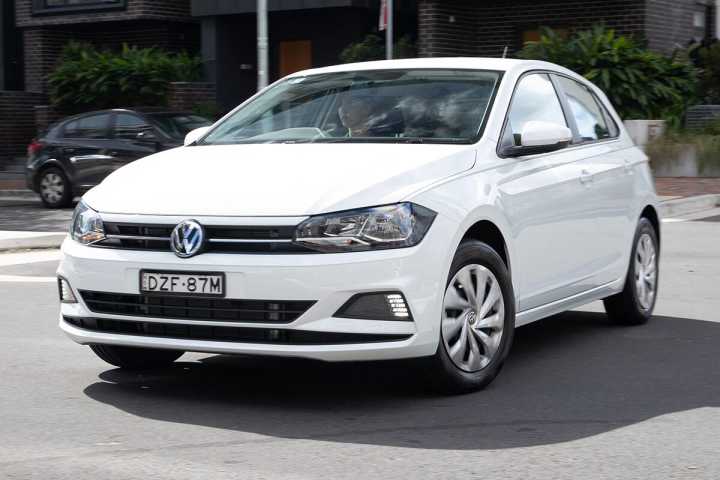


.jpg)
.jpg)
.jpg)
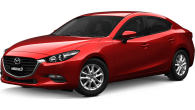

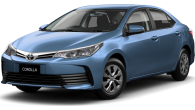

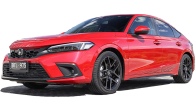







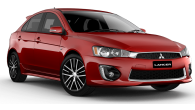




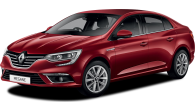
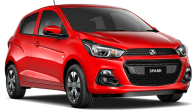
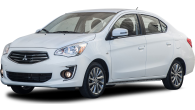






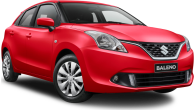





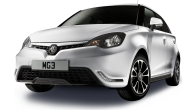


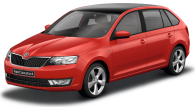
.jpg)



.jpg)


.jpg)
.jpg)
Comments